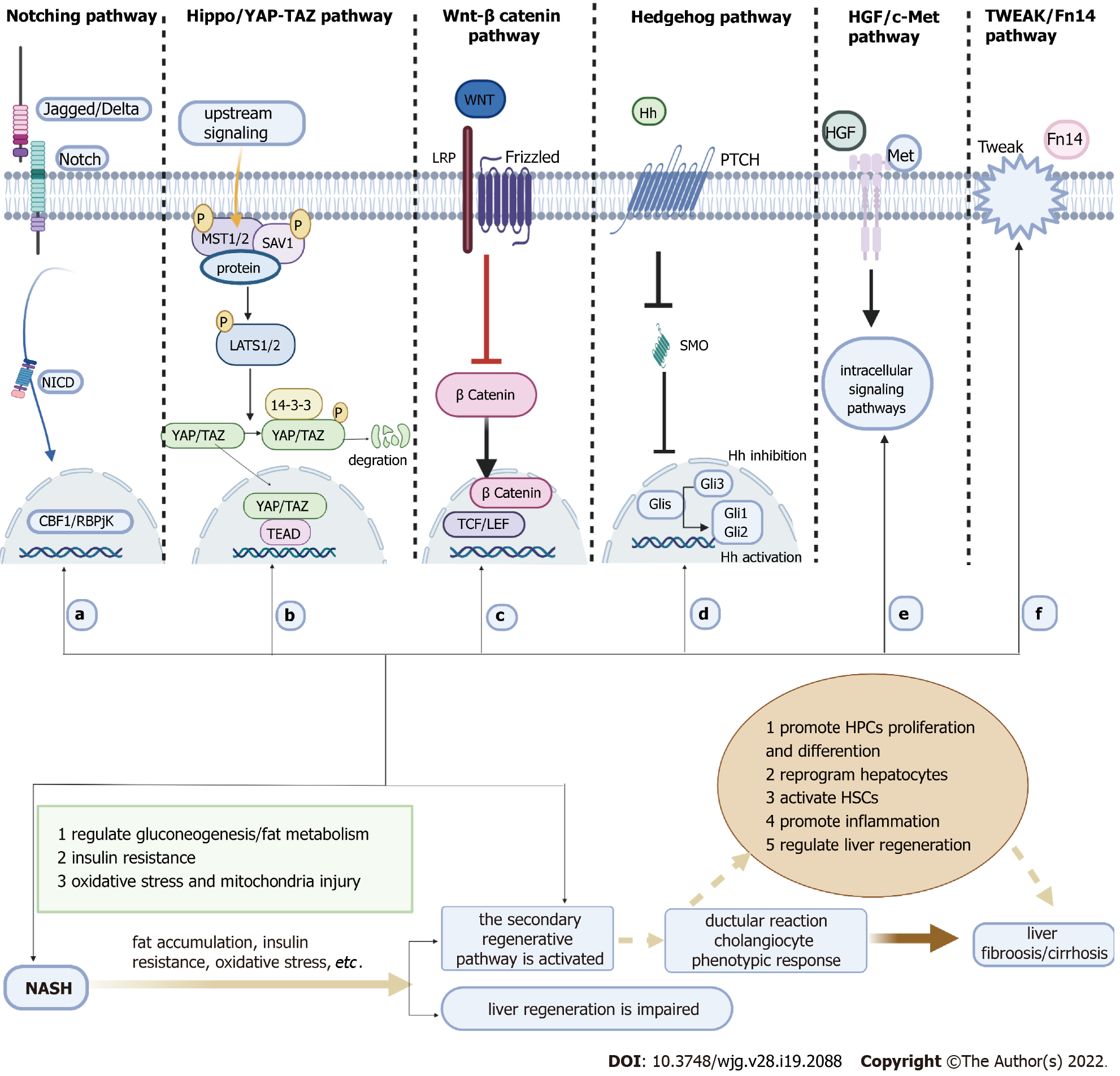Copyright
©The Author(s) 2022.
World J Gastroenterol. May 21, 2022; 28(19): 2088-2099
Published online May 21, 2022. doi: 10.3748/wjg.v28.i19.2088
Published online May 21, 2022. doi: 10.3748/wjg.v28.i19.2088
Figure 1 The different compartments of the ductular reaction, including hepatocyte self-proliferation and transdifferentiation, hepatic progenitor cell differentiation, and cholangiocyte proliferation and transdifferention.
HPC: Hepatic progenitor cell.
Figure 2 A series of highly conserved signaling pathways in the ductular reaction which promotes the occurrence of non-alcoholic fatty liver disease and aggravates the prognosis of non-alcoholic steatohepatitis (Created with BioRender.
com). A: The Notch signaling pathway regulates expression of genes, such as the Hes and Hey-related family, to determine cell differentiation and function, maintain liver homeostasis, repair liver damage, and regulate liver metabolism, inflammation, and cancer; B: The Hippo/YAP-TAZ signaling pathway can regulate liver size, metabolism, cell proliferation, cell migration, the epithelial-mesenchymal transition, and formation of the extracellular matrix and cytoskeleton formation, etc; C: The Wnt/β-catenin signaling pathway affects liver development and physiological functions of all liver disease stages, from initial injury and inflammation to fibrosis, cirrhosis and tumor occurrence; D: The hedgehog signaling pathway affects cell proliferation, migration, and differentiation; E: The HGF/c-Met signaling pathway activates multiple intracellular signaling pathways and affect cell proliferation, migration, and differentiation; F: The TWEAK/Fn14 signaling pathway regulates tissue inflammation and damage repair in addition to cell survival and death. HPC: Hepatic progenitor cell; NASH: Non-alcoholic steatohepatitis.
- Citation: Chen Y, Gao WK, Shu YY, Ye J. Mechanisms of ductular reaction in non-alcoholic steatohepatitis. World J Gastroenterol 2022; 28(19): 2088-2099
- URL: https://www.wjgnet.com/1007-9327/full/v28/i19/2088.htm
- DOI: https://dx.doi.org/10.3748/wjg.v28.i19.2088










